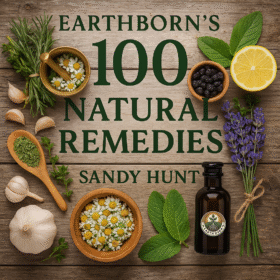-
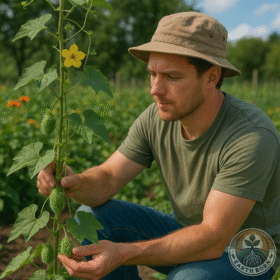
Bushu (Cucumis zambianus)
🌱 Introduction and history Bushu (Cucumis zambianus), also known as the African Wild Cucumber or Zambian Cucumber, is an annual climbing plant in the Cucurbitaceae family — relatives of gourds, melons, and cultivated cucumbers. Indigenous to Southern Africa, it grows naturally in South Africa, Zambia, and Zimbabwe, thriving in grasslands and along fences. Traditionally gathered from the wild, Bushu has been valued not only for its unique spiky green fruits but also for its medicinal and cultural uses. 💊 Medicinal Benefits In traditional African medicine, Bushu has been used for: Digestive support – Leaf infusions may relieve indigestion and mild…
-
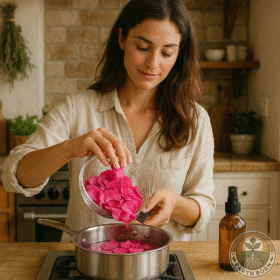
3 Natural Remedies Using Damask Rose
To learn how to grow and care for Damask Rose visit this post 1. Damask Rose Tea – Calming & Digestive Support Ingredients: 1 tablespoon dried Damask rose petals 250 ml boiling waterDirections: Add petals to a teacup. Pour boiling water over the petals and steep for 10 minutes. Strain and drink warm.Dosage: 1–2 cups daily, preferably after meals.Use For: Calms anxiety, aids digestion, and helps relieve menstrual discomfort. 2. Damask Rose Water Toner – Skin Hydration & Soothing Ingredients: 1 cup fresh Damask rose petals 2 cups distilled waterDirections: Simmer petals in water for 15 minutes on low heat.…
-
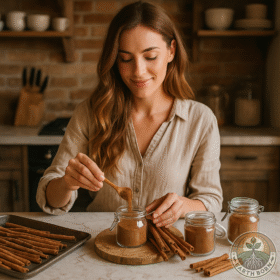
3 Home Remedies using Ceylon Cinnamon
How to Dry Ceylon Cinnamon Harvesting: Cut young branches (2–3 years old) and remove the outer bark. Peeling: Scrape off the thin inner bark carefully. Drying: Spread the bark strips in a warm, shaded, and well-ventilated area. They will curl naturally into cinnamon sticks as they dry (usually 4–7 days). Storage: Store dried sticks in an airtight glass jar in a cool, dark place. To find out how to grow and care for the tree click here 1. Cinnamon & Honey Immunity Booster Ingredients: ½ teaspoon Ceylon cinnamon powder 1 teaspoon raw honey 1 cup warm water Instructions: Stir the…
-
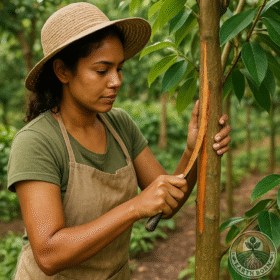
🌱Ceylon Cinnamon (Cinnamomum verum)
Ceylon Cinnamon (Cinnamomum verum), often called True Cinnamon or Sri Lankan Cinnamon, is a highly prized spice native to Sri Lanka and southern India. It belongs to the Lauraceae family and has been cultivated for thousands of years. Ancient Egyptians used it in embalming, Romans valued it for its fragrance, and it was considered more valuable than gold during the spice trade era. Today, Ceylon Cinnamon is celebrated for its delicate, sweet aroma and numerous medicinal properties. 💊 Medicinal Benefits Ceylon Cinnamon contains active compounds such as cinnamaldehyde, eugenol, and linalool, giving it powerful anti-inflammatory, antioxidant, and antimicrobial properties. It… Read more…
-

🌿Herbs High in Magnesium
Why We Need Magnesium Magnesium is essential for over 300 biochemical processes in the body. It plays a key role in energy production, nerve function, muscle contraction and relaxation, and regulating blood pressure. It also supports bone health, helps the body produce proteins and DNA, and aids in maintaining a healthy heart rhythm. Deficiency can lead to muscle cramps, fatigue, irritability, and even heart irregularities, making it important to ensure a steady intake through diet and herbs. Nettle (Urtica dioica) Traditionally used as a tonic for energy and minerals. Often prepared as a tea or steamed like spinach. Parsley (Petroselinum… Read more…
-

🌿 3 Natural Remedies Using Cardamom (Elettaria cardamomum)
Cardamom isn’t just a delicious spice—it has been used for centuries in traditional medicine to soothe digestion, freshen breath, and uplift the senses. To learn how to grow and care for Cardamon click hereHere are three simple ways to use it at home: ✨ 1️⃣ Digestive Soothe TeaWhy it works:Cardamom contains compounds like cineole and limonene that stimulate digestive enzymes, helping reduce bloating, gas, and indigestion. How to Make:✅ Lightly crush 4–5 green cardamom pods.✅ Steep them in 1 cup of freshly boiled water for 10 minutes.✅ Strain and sip slowly after meals. Disclaimer:If you have gallstones or are pregnant,… Read more…
-

🎃Pumpkin (Cucurbita pepo)
🌱 Introduction and History The humble pumpkin (Cucurbita pepo and Cucurbita maxima) is an ancient plant first cultivated over 7,500 years ago in North America. Early civilizations like the Aztecs and Native Americans used pumpkins for food, medicine, and even household containers. Today, pumpkins are grown across the globe, from South Africa to Egypt and beyond. This versatile vine offers delicious fruit, ornamental value, and remarkable nutritional benefits. 💊 Medicinal Benefits Pumpkins are a powerhouse of nutrients. The bright orange flesh is rich in beta-carotene (which the body converts into vitamin A), vitamin C, and antioxidants that help strengthen the…
-
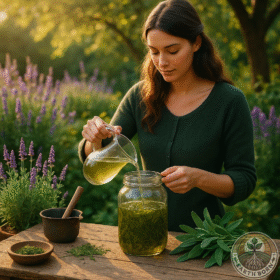
Wormwood (Artemisia absinthium)
🌱 Intro 🌱 Introduction and HistoryWormwood (Artemisia absinthium), often called absinthe wormwood or green ginger, is a silvery perennial herb native to Eurasia. It’s one of the oldest medicinal herbs, dating back to ancient Egypt and Greece, where it was used in religious rituals and healing. During the 19th century, it rose to fame as the key ingredient in the controversial alcoholic drink absinthe. Today, wormwood is cultivated across the globe, including South Africa, valued both for its beauty and its bitter medicinal qualities. 💊 Medicinal BenefitsWormwood contains powerful bioactive compounds like thujone, absinthin, and artemisinin. It has traditionally been…
-
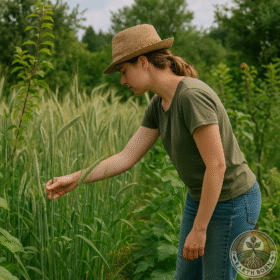
🌱Rye (Secale cereale)
Rye (Secale cereale), also called Cereal Rye, Winter Rye, or Common Rye, is an annual cereal grain from the Poaceae family. Originally domesticated in the Middle East, it became a staple across Eastern Europe and the Nordic countries due to its cold tolerance and soil adaptability. While not native to South Africa, rye grows well in various African regions, including Ethiopia, Kenya, and Tanzania. Its uses span from soil enrichment and livestock fodder to breadmaking and brewing, making it an excellent multipurpose crop. 💊 Medicinal BenefitsTraditionally, rye has been used to support digestive health and improve blood circulation. Its high… Read more…
-
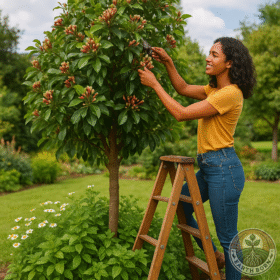
🌱Clove (Syzygium aromaticum)
Clove (Syzygium aromaticum) is an evergreen tree native to the Maluku Islands of Indonesia, known as the “Spice Islands.” These aromatic flower buds have been treasured for over 2,000 years, used in Ayurvedic and Chinese medicine, as well as for culinary and ceremonial purposes across Asia, Africa, and Europe. Its historical trade routes shaped empires and economies, and today, cloves remain a cornerstone of both traditional medicine and global cuisine. 💊 Medicinal Benefits Cloves are powerhouses of medicinal value. The active compound eugenol has proven antiseptic, analgesic, and anti-inflammatory properties. Clove is often used to relieve toothaches, reduce inflammation, support…
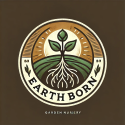

 **Meet Sprout!** Sprout is your friendly gardening companion at Earthborn, always ready with helpful advice on plant care, medicinal herbs, and natural gardening solutions. From seedling to harvest, Sprout provides expert guidance to nurture your garden and your well-being—making gardening easy, fun, and naturally rewarding.
**Meet Sprout!** Sprout is your friendly gardening companion at Earthborn, always ready with helpful advice on plant care, medicinal herbs, and natural gardening solutions. From seedling to harvest, Sprout provides expert guidance to nurture your garden and your well-being—making gardening easy, fun, and naturally rewarding.
